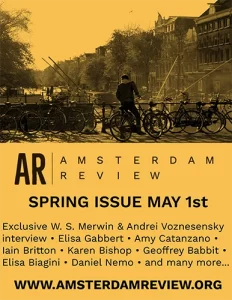You May See a Stranger
Whether we view our lifetimes as a series of clearly delineated chapters, isolated incidents, developmental stages or something akin to a tangled ball of fraying yarn, the journey from our youth to the ripe weariness of middle age somehow seems to leave us mystified when we come to consider how we got from a place of such innocence and naivete to, well, here, in this room where we lie, wracked with disappointment, betrayal, disillusionment and an all-too-hefty dose of loneliness. We tend to remember the important scenes in which we were featured within the great cosmic film of life, but the connections elude us, as though the imprints from our experiences are processed only after the screen fades to black.
Whether we view our lifetimes as a series of clearly delineated chapters, isolated incidents, developmental stages or something akin to a tangled ball of fraying yarn, the journey from our youth to the ripe weariness of middle age somehow seems to leave us mystified when we come to consider how we got from a place of such innocence and naivete to, well, here, in this room where we lie, wracked with disappointment, betrayal, disillusionment and an all-too-hefty dose of loneliness. We tend to remember the important scenes in which we were featured within the great cosmic film of life, but the connections elude us, as though the imprints from our experiences are processed only after the screen fades to black.
Yet, in exploring the life of Miranda Weber through a series of linked short stories, Paula Whyman traces the threads that reveal a cohesive evolution from adolescence, early adulthood, marriage, and childrearing to the tending of her empty nest. While the details may be unique to her experience, there is something so familiar, so hauntingly universal to the progression of events, that virtually any woman who came of age in the 1980’s, now teetering precariously on the precipice of middle age, is likely to see her own visage reflected in the mirror that is Whyman’s world-weary heroine.
The collection opens with a piece entitled, “Driver’s Education,” wherein Miranda’s exposure to racial tensions and her first forays into sexual exploration take place against the backdrop of a driver’s education course offered in the basement of the Mackleby-Warner department store. I nearly closed the book in disgust upon encountering the antagonist’s racist, ableist, and misogynistic remarks and behaviors, for Whyman’s ultra-polished prose had put me on high-alert, justifiably or not, for the calling out of a privileged perspective. Yet, I couldn’t be more grateful that I endured in spite of my aversion, for by the story’s conclusion, it was obvious that it was written with a more profound message in mind.
“You May See a Stranger” became one of my most favored stories from the collection, even before I realized the tale would continue within the last story, entitled, “Just Sex,” another soul-stirring piece. Processing the news of her unintended pregnancy while attending an utterly painful celebratory dinner at the country club for her self-obsessed, innately-entitled boyfriend, Pogo, whom she fears to tell, Miranda attempts to navigate her nausea and tears amid the fierce one-upmanship between him and his younger brother. This is manifested within his girlfriend Natasha’s oh-so-exciting news, presented with the tilt of her head and the silky, slow-motion, shampoo-commercial swing of her hair. The precision with which Whyman communicates the personalities around the table left me to, I swear, experience Miranda’s nausea, her overwhelm, and that one knowing glance as though it were my own.
“Dubrovnik 1989” proves an intricately woven tapestry of Miranda’s days as can only be lived in one’s early twenties, ripe with lecherous men, an empty bank account, and the magic of serendipity. I cringed throughout, overcome with a longing to rescue her, to save her from herself; but, if memory serves, a vast majority of us were sure at “that age” that there could be no other way. Even the most unnerving circumstances simply reeked of possibility.
Though “Jump” didn’t rank among my favorites stylistically, it certainly deserves a mention for its impact upon Miranda’s framing of events. Throughout the earlier part of the collection, Miranda expresses her resentment for the weight of the responsibility placed upon her by her parents to tend to the emotional needs of her disabled older sister, Donna; yet, after a neighbor finds her lifeless body splayed on the cement beside the pool, having thrust herself from her balcony above, Miranda finds herself wondering, “Can I perform a pas de deux alone? I can leap; I can catch myself. Here I am, my sister and me, I’m both now. And neither.” The loss is greater than she can bring herself to admit; yet, it cascades throughout virtually all the turning points yet to come.
I must admit, I grew profoundly melancholy in the reading of “Threat Potential,” the story of a family vacation wherein the characters are referred to as mother, father, girl, and boy rather than by their names. The effect being the dynamics at play take on the universality that, from my experience, proves inevitable in the transition from couple to family. The father’s impatience and long-harbored irritation saddened me in a way I once knew all too well while the mother’s peace-keeping, in spite of her longing for the once-impassioned days of car sex and field hockey, leaves her only with a hypervigilance for danger and the avoidance of any potential threat.
In “Self Report,” Miranda comes face-to-face with the knowledge that her daughter is the age she once was when life was filled with possibility, unbearable desire and “what were you thinking” indiscretions, which even in middle age can somehow still be justified; while, in “Just Sex,” the indiscretions build to a mighty crescendo as Miranda reunites with Pogo, the dinner-party boyfriend whose baby she carried for most of the first trimester 25 years prior. Not only does the reader find herself privy to heartbreaking revelations, but Miranda as well, leaving them both with only the ache of memory and regret as well as a most painful resistance to letting the past go.
For those of us anywhere near Miranda’s stage of life, Whyman’s collection serves as a catharsis for healing. After all, we grow so very much bolder in simply realizing that we are, in fact, not alone. It is my hope that readers in their twenties will witness the lechery of Miranda’s love interests and her willingness to succumb and wonder how our generation could possibly tolerate such bad behavior. As for anyone else compelled to pick up the book for its literary merit alone, I ask that you recognize Miranda’s is the story of so many of the women who live and work around you. Given their resilience, their pleasant smiles and impeccable manners may well belie their truth, but, trust me, it is there—within the lines around their eyes and their downcast or occasionally absent gaze.





